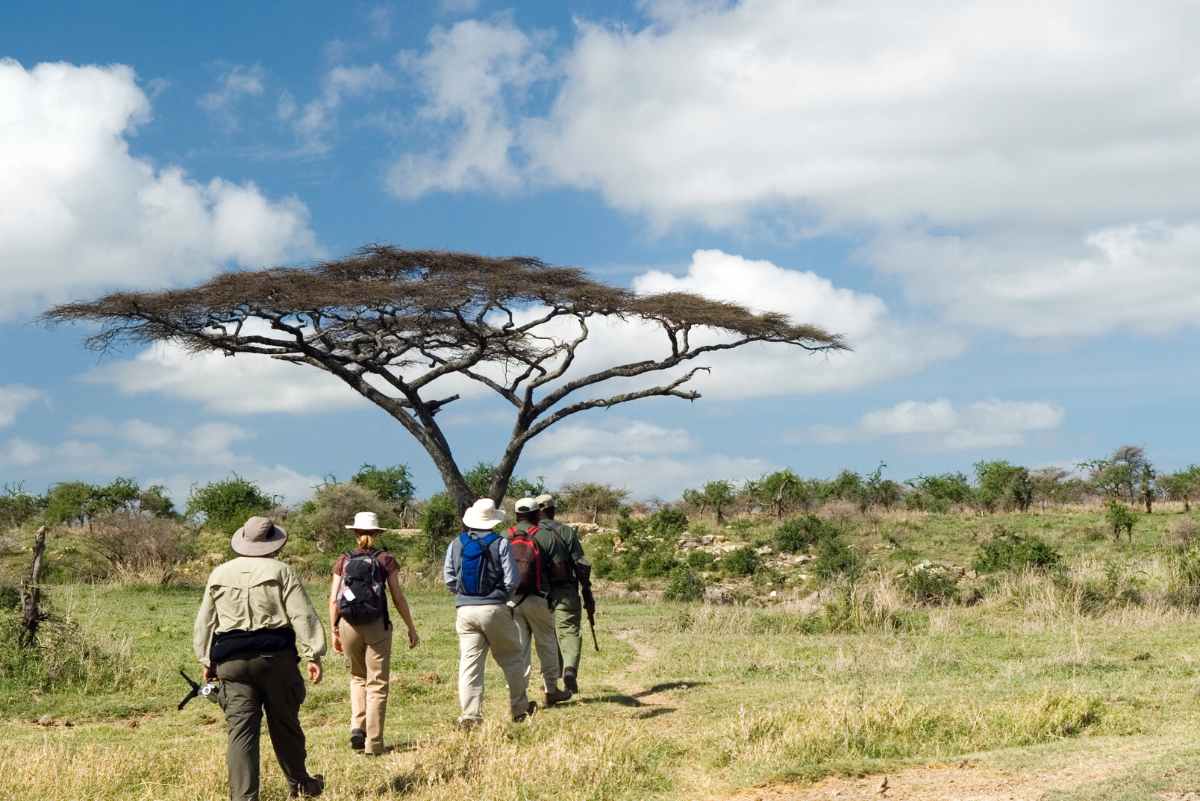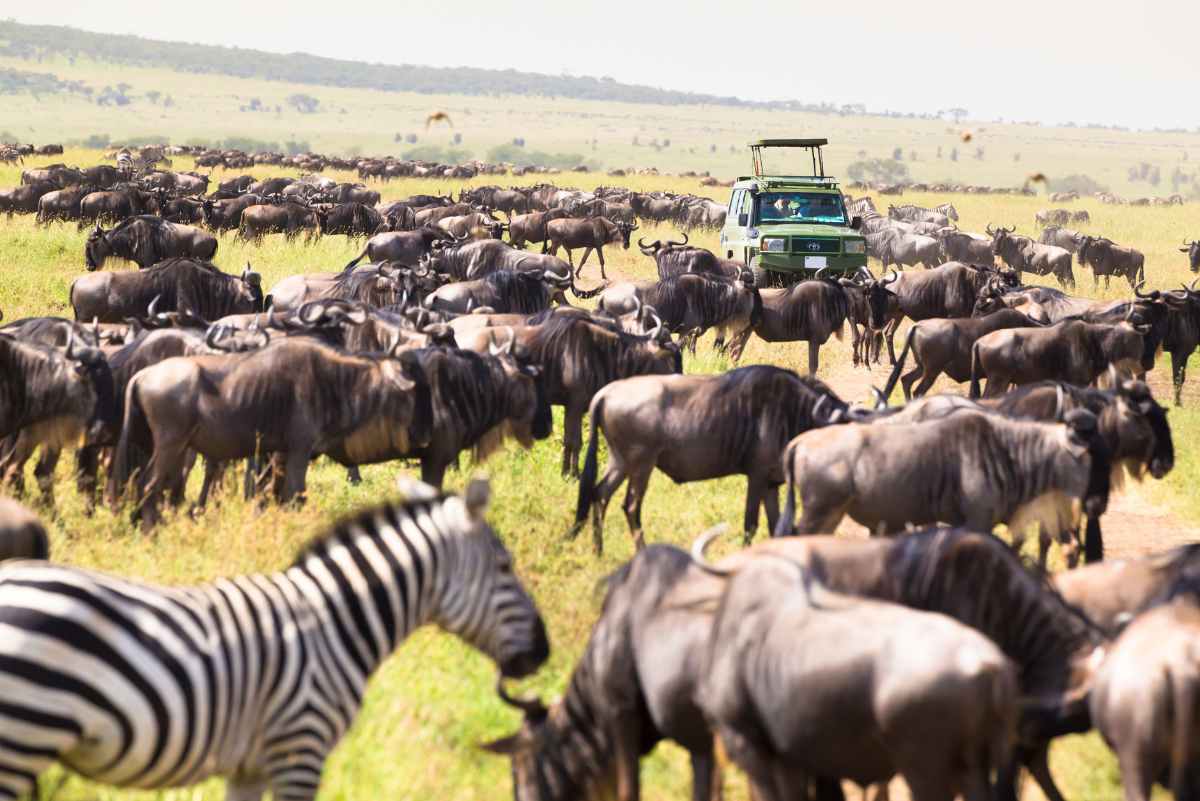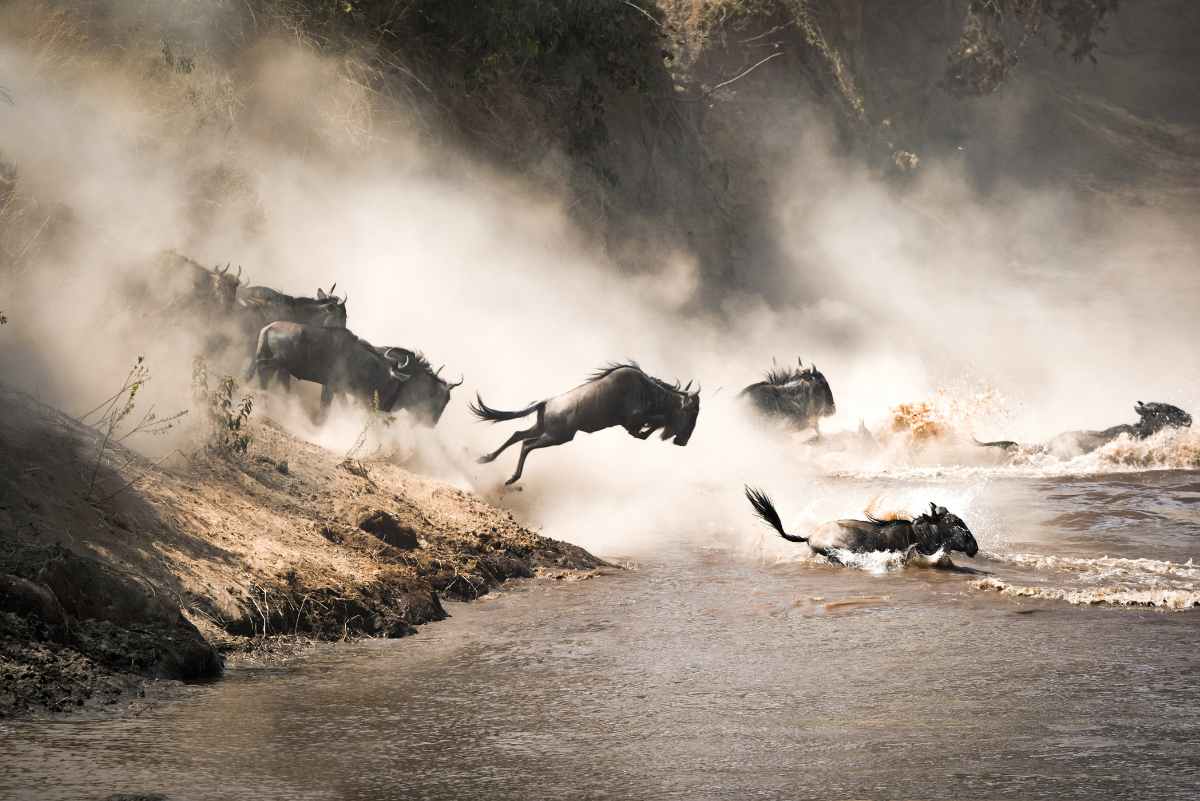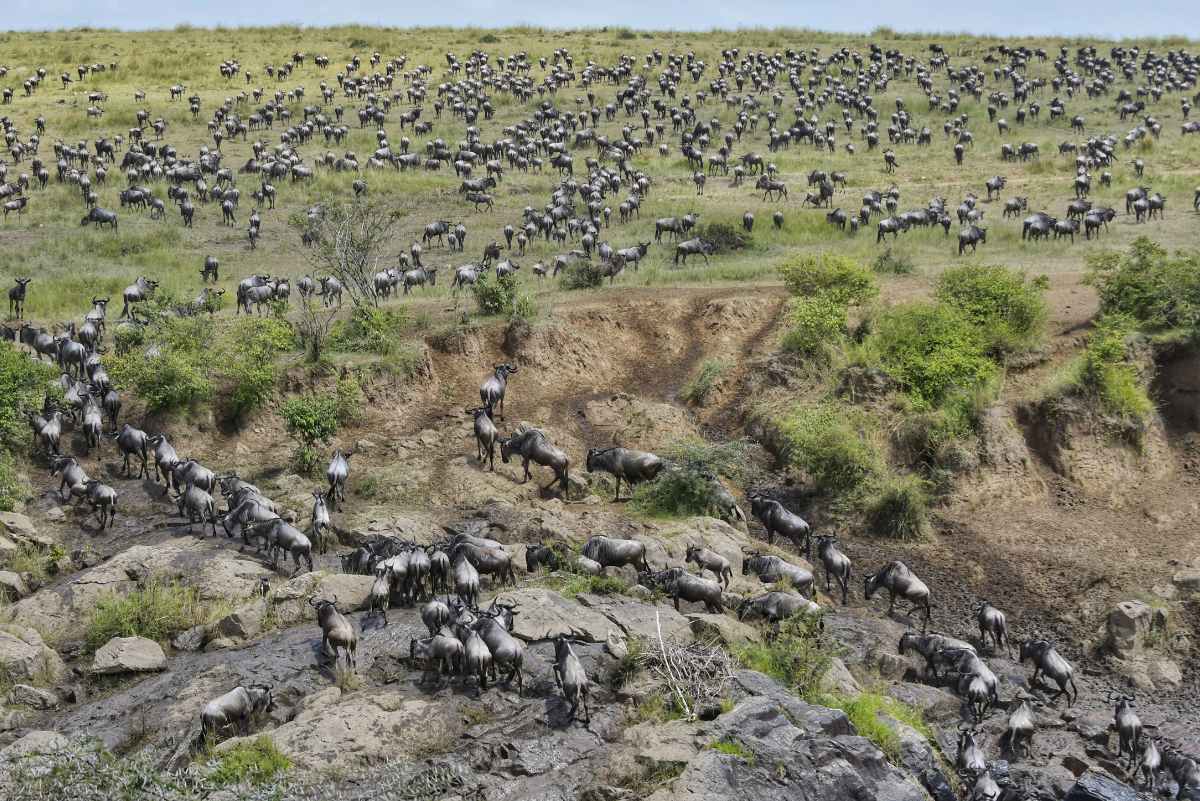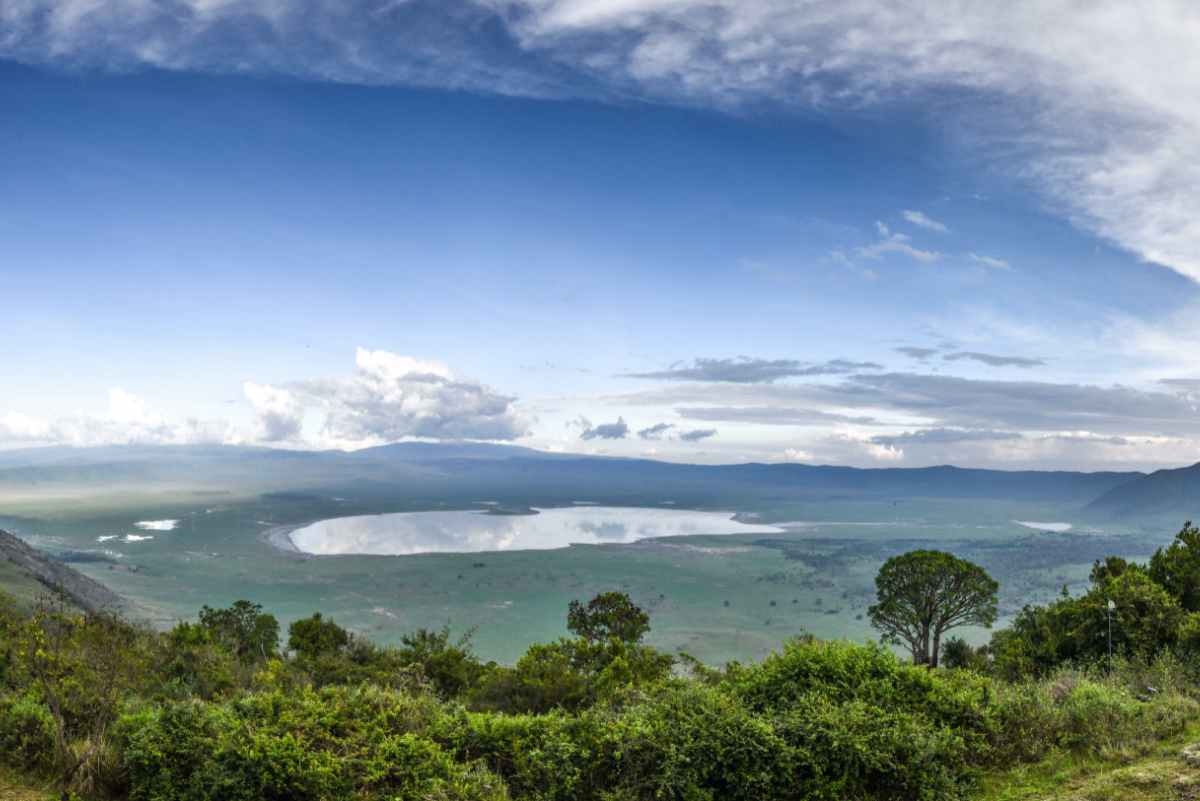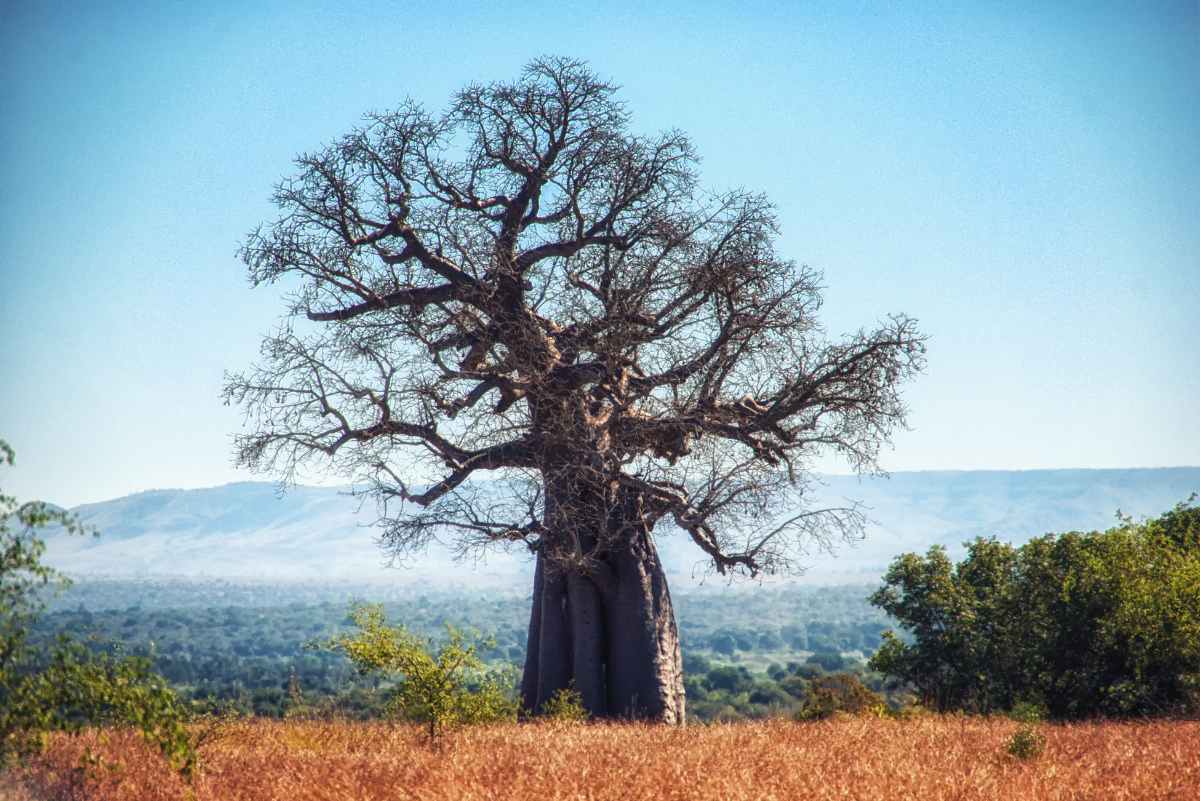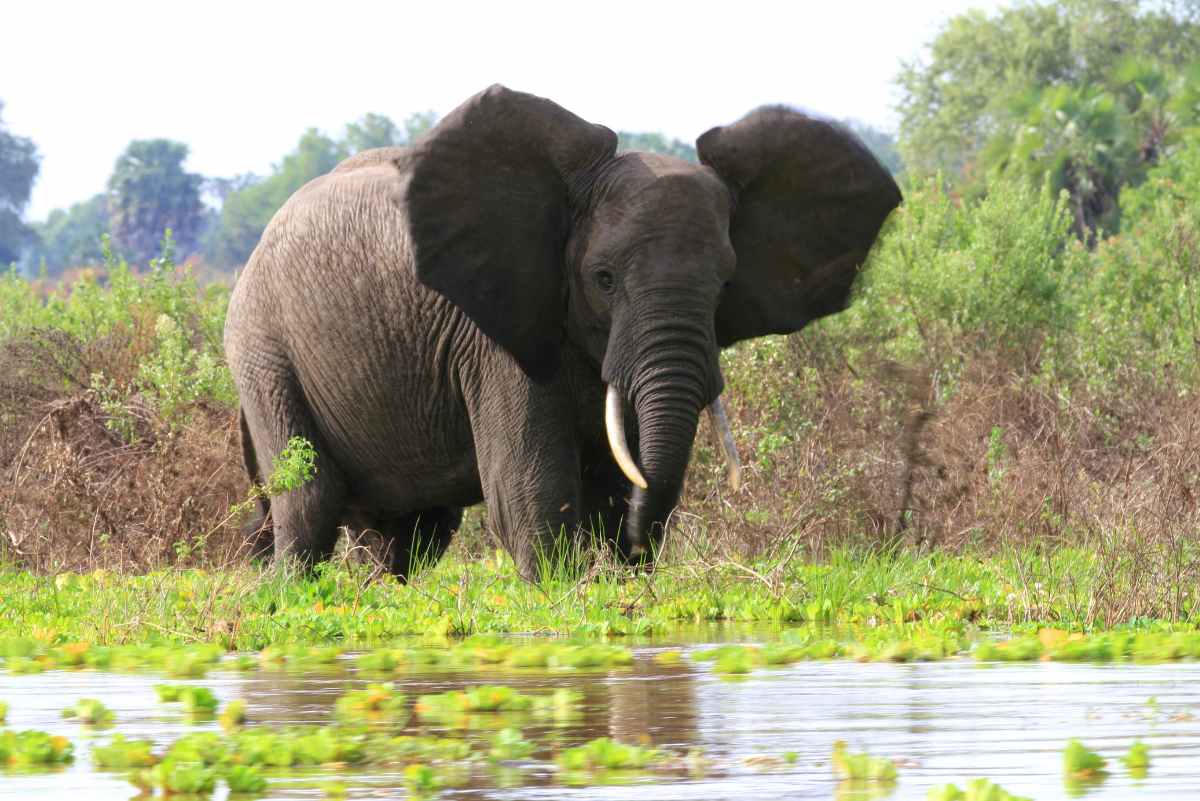North vs South Safari Circuits
Exploring Tanzania North vs South Safari Circuits
Tanzania stands as a premier choice for African safari enthusiasts, drawing travellers with its diverse landscapes, abundant wildlife, luxurious accommodations, and rich cultural experiences. Whether you’re a first-time adventurer or a seasoned safari-goer, Tanzania has something for everyone.
So you’ve finally decided to go on the ultimate safari in Tanzania – it’s where the Swahili word “safari” (meaning journey) originates from, after all. Now the question is, do you visit southern or northern Tanzania?
Exploring Tanzania can be a fulfilling journey. Covering a vast land area of 947,300 km² (365,754 mi²) and boasting a coastline stretching 1,424 km (884.8 mi), a comprehensive Tanzania safari, encompassing top national parks and cities, can easily span four weeks making it a venture suited for the fortunate few. For the rest of us, the choice often narrows down to the northern circuit and southern circuit, both promising extraordinary experiences.
Tanzania North vs South Safari Circuits
Tanzania seems tailor-made for safaris, with an abundance of natural wonders waiting to be explored. However, given the vastness of the country, it’s practical to divide it into two safari routes: the northern circuit and the southern circuit, each delineated by the geographical spread of national parks. Regardless of your choice, authentic safari experiences, close wildlife encounters, and breathtaking landscapes are guaranteed.
Tanzania’s safari adventures unfold along two distinct routes. The first winds through the iconic northern parks, where the Serengeti, Ngorongoro, and Tarangire National Parks await. Here, witness the awe-inspiring Great Wildebeest Migration, where millions of animals journey vast distances in search of water. This circuit boasts easier accessibility, budget-friendly options, and a bustling atmosphere.
The Serengeti National Park, spanning over 14,700 km², offers diverse landscapes and vast open plains that serve as the stage for the spectacular Great Wildebeest Migration, an annual journey featuring over 1.5 million wildebeest and 200,000 zebra. East of Serengeti, the Ngorongoro Crater captivates with its grandeur—a colossal extinct volcanic caldera boasting a 20-kilometer diameter and depths exceeding 600 meters. Beyond its geological marvels, the crater floor hosts exceptional game viewing opportunities, making it a reliable sanctuary for rhino sightings in Tanzania.
In this region, smaller yet captivating national parks await. Lake Manyara, to the south of Arusha, beckons bird enthusiasts with its diverse avian life, while Tarangire National Park, also south of Arusha, mesmerizes visitors with colossal elephant herds. A typical northern Tanzania safari itinerary commences in Arusha, leading travellers through the enchanting landscapes of Lake Manyara en route to a two to three-night stay in the Ngorongoro Crater.
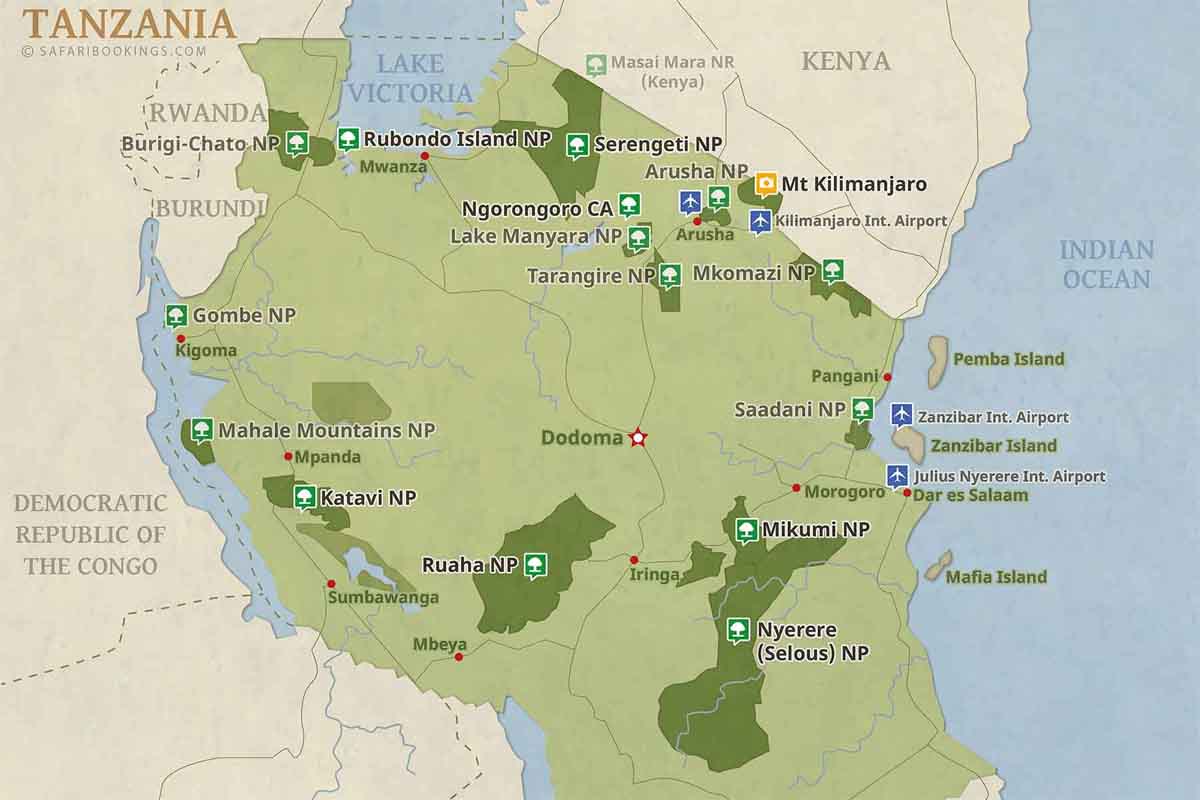
On the flip side lies the southern safari circuit, promising a radically different adventure. For the daring explorer seeking off-the-beaten-path encounters, the Selous and Ruaha National Parks beckon. This southern route offers a unique opportunity to embrace the wild in a more intimate, remote setting, ideal for travellers with a thirst for genuine, unspoiled safari experiences.
Exploring Tanzania’s southern parks offers a profoundly different safari experience than the northern counterparts. The scarcity of visitors, diverse safari activities, and the overall landscape characterize the allure of the southern parks. The vast Selous Game Reserve, stretching over 45,000 km², stands as Africa’s largest game reserve, dwarfing even the renowned Serengeti, covering an area three times its size. The Selous captivates with its diverse terrain, featuring lakes, expansive plains, lush vegetation, and streams fringed with palms. Central to the reserve’s charm is the mighty Rufiji River, around which most safari activities revolve. Your safari experience here involves exhilarating game drives along the riverbanks, tranquil boat safaris offering scenic lunch spots and sundowners, and even the option of engaging in catch-and-release fishing in the Rufiji’s abundant waters.
The other national park in southern Tanzania is Ruaha. In comparison to the Selous, Ruaha National Park is very dry. Parts of the Great Ruaha River dry up in the dry season (July to October) and the earth exposes its red soil. Often the safari camps will use the dry riverbeds to set up dinners or sundowners in the evening. The activities here are also varied – you can do walking safaris, game drives and even fly camping. As a park, Ruaha is known for its buffalo herds, its native huge baobab trees and its lion population. In fact, Ruaha is home to 40% of Tanzania’s lions.
The final national park located in southern Tanzania is Katavi. Because of its remoteness and limited accommodation options (two main safari camps here), Katavi is probably one of the least visited national parks in Tanzania. That said, if you are looking for a complete wilderness, fairly basic accommodation and an authentic experience with very few other travellers, this is a good option for you. You can fly to Katavi from Ruaha National Park
Access and Convenience
Let’s start with accessibility. In the northern circuit, you’ll find a seamless journey as national parks are easily reachable by road. This means less hassle and more time to savour the wonders of the wild. On the flip side, the southern circuit’s parks are tucked away in remote corners, demanding travel by light aircraft. While the seclusion offers a unique charm, it does come at a cost of time and convenience.
The northern parks also work well for families or multi-generational families heading on safari. This is because they have a range of accommodations including larger lodges which have family requirements like a swimming pool, air conditioning or private safari jeeps.
Budget-Friendly Options
Speaking of costs, your wallet matters. The southern circuit, due to its remote nature, involves pricier fly-in safaris, making it a more exclusive but expensive choice. The remoteness of the southern circuit translates to higher costs, as fly-in safaris become a necessity due to limited road access. Infrequent flights and considerable distances between parks inflate expenses.
On the other hand, the northern circuit, being more accessible, proves more budget-friendly, with a plethora of flight options, making it the economical choice. Along with a well-travelled road network, the northern safari circuit has an abundance of accommodation options, from comfortable lodges to mobile safari camps to stunning safari lodges. There is more choice in the north to suit more budgets.
While there are amazing camps and lodges in the south, there are not the large range of budget hotels that the north has.
Crowd Dynamics
Now, let’s talk crowds. If you prefer a more intimate safari experience, the southern circuit might be your haven. With fewer visitors, you can relish the serene atmosphere, often feeling like you have the whole place to yourself. The northern circuit, being more popular, buzzes with fellow travelers eager to witness the wonders of Tanzania. Depending on your preference for solitude or camaraderie, you can make your choice wisely.
Wildlife Encounters
Lastly, the heart of any safari: wildlife. In the north, national parks teem with game, offering remarkable sightings of the Big 5 and other majestic creatures. The animals here are accustomed to safari vehicles, allowing for close encounters and breathtaking moments. In the south, wildlife roams freely, albeit more elusive. While sightings might require patience and a keen eye, the thrill of spotting these creatures in their natural habitat remains unparalleled.
Huge herds of elephants and buffalo are also common in both Ruaha and Selous, but you won’t see rhinos down there.
In summary, dear adventurers, both circuits promise awe-inspiring experiences, but your choice boils down to accessibility, budget, crowd preference, and your thirst for wildlife encounters. Consider these factors wisely, and you’re sure to embark on a safari tailored perfectly for discerning travellers. And you can always come back for a second safari and do the other circuit!


